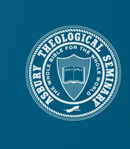Abstract
The three “lamp” passages in Samuel (1 Sam 3:3; 2 Sam 21:17; 22:29) cooperate to establish an inclusio that serves as the hermeneutical lens for the final form of Samuel. Contrary to Graeme Auld, therefore, 1 and 2 Samuel is not necessarily all about David, but rather it’s about David insofar as he is the chief vehicle through which the narrative communicates a particular ideology. To account for this dynamic, there appears to be at least two phases of development within Samuel’s lamp metaphor, the latter of which imported a more critical posture toward the monarchal institution. Moreover, the latter phase of this metaphor’s development appears to have important implications for Samuel’s literary development away from an ancient apology. Alastair Fowler argues that literary genres change through time, and when this happens ideas encroach upon literary forms and become the driving force of the work’s presentation. Synthesizing this framework with some of the ideas of John Van Seters, this essay proposes that the certain phases of Samuel’s literary development may constitute the moding of a royal apology.
DOI
10.7252/Journal.02.2018F.09
Recommended Citation
Schreiner, David B.
(2018)
"On the Moding and Diachrony of the Books of Samuel,"
The Asbury Journal:
Vol. 73:
No.
2, p. 73-84.
Available at:
https://place.asburyseminary.edu/asburyjournal/vol73/iss2/11
Included in
Biblical Studies Commons, Christian Denominations and Sects Commons, Missions and World Christianity Commons

